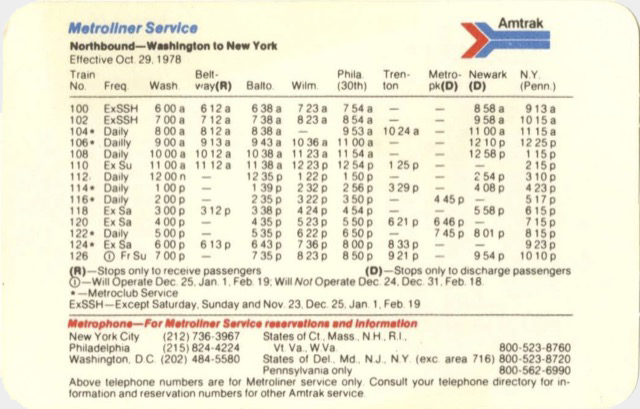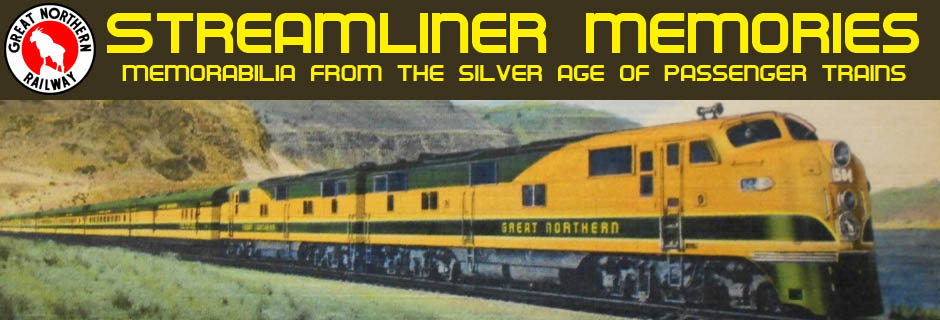Built by Budd and originally funded by the federal government under the High Speed Ground Transportation Act of 1965, the Metroliners–along with the United Aircraft Turbo Trains–were supposed to be America’s answer to the Japanese bullet trains, which had top speeds of 130 mph when introduced in 1964. Both trains were capable of going faster than 160 mph, but when placed in service between New York and Washington the Metroliners were confined to speeds no greater than 120 mph.
 Click image to download a 247-KB PDF of this timetable.
Click image to download a 247-KB PDF of this timetable.
Penn Central ran two non-stop Metroliners a day, taking 2-1/2 hours between the nation’s political and financial capitals. As shown on this wallet-sized timetable, Amtrak had dropped the non-stop Metroliners and its fastest runs took 3 hours 10 minutes. By comparison, the fastest Acelas today take 2 hours 53 minutes. This 1978 timetable shows thirteen weekday Metroliner departures each way, compared with seventeen Acela‘s today.
